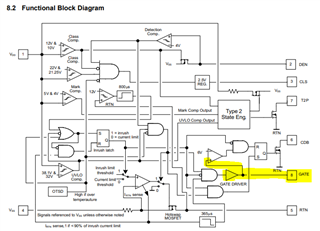Other Parts Discussed in Thread: TPS2379,
Team,
my customer would like to replace TPS2378 with TPS2379.
In their application they are using TPS2378 (APD shorted with RTN – not used internal pass MOSFET).
Looking at the difference is that TPS2379 has a gate drive circuit at the same pin as APL on the TPS2378.
Can I keep the short to RTN that is currently in the layout or do I have to modify the layout to start using the TPS2379?
Thanks!



